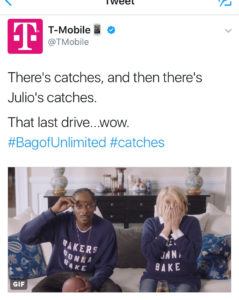 Five minutes after National Geographic aired its 60-second Super Bowl commercial teasing its new scripted series “Genius,” Apple News users got alerts for a Nat Geo article about Einstein’s love affair with his violin, Lina.
Five minutes after National Geographic aired its 60-second Super Bowl commercial teasing its new scripted series “Genius,” Apple News users got alerts for a Nat Geo article about Einstein’s love affair with his violin, Lina.
The feature also had “Genius” trailers and the post-halftime Super Bowl spot – in which Einstein, depicted by Geoffrey Rush, played Lady Gaga’s “Bad Romance” on the violin. Lady Gaga, of course, was the halftime performer.
None of Sunday’s game-night strategies were accidental, said National Geographic Channel’s EVP and CMO, Jill Cress.
Like many brands, Nat Geo released its Super Bowl commercial early to drum up interest, but aimed to keep the element of surprise through digital and social synchronizations.
Inception to launch took Nat Geo about three weeks because it needed to make sure its campaign was integrated.
“This wasn’t just about getting a Super Bowl spot out there,” Cress said. “We had a proper war room set up with teams from disciplines across social and digital marketing to execute it in a way that felt relevant for fans and audiences.”
In order to create a spark of serendipity, Nat Geo leveraged its relationship with Fox Sports (Twenty-First Century Fox owns a majority stake in Nat Geo) to ensure its television creative corresponded with Lady Gaga’s halftime performance.
“Everything we put out after was designed around the launch using an editorial content approach and having an arsenal of really contextually relevant consumer stories that weren’t necessarily about our brand,” Cress said.
As a result, early results from analytics firm iSpot.tv indicate Nat Geo generated 181.9 million social impressions from its coordinated Super Bowl effort.
Coordinating Cross-Channel
Snickers also aimed to coordinate its TV ad with other channel activations. Its live, 30-second commercial featuring actor Adam Driver (HBO’s “Girls,” “Star Wars: The Force Awakens”) had social and digital teasers, a live stream of the set and a PR blitz all leading up to the commercial.
“It’s still going on today as Adam makes the rounds across the media to ‘apologize’ for the ad,” said Charlie Fiordalis, chief digital officer of independent media agency Media Storm, who observed that this year’s campaigns were all about deeper integration. “It’s a cross-screen effort that requires coordination and involvement across agencies, fans and even the media.”
A number of other brands created a network effect for their Super Bowl spot by using paid social and search ads, along with digital video.
 T-Mobile, for instance, ran discovery ads (which appear in search results and the related video section) and in-stream ads paired with companion banners on YouTube.
T-Mobile, for instance, ran discovery ads (which appear in search results and the related video section) and in-stream ads paired with companion banners on YouTube.
It also served banner ads on top sports sites such as NBC Sports and Sports Illustrated. And on Twitter, the mobile carrier sponsored tweets from its wild-card CEO and celebrities featured in its Super Bowl commercial – Snoop Dogg and Martha Stewart.
That strategy appeared to pay off because it generated a whopping 353 million social impressions, according to iSpot.tv data.
“A strong presence in search results, on social media and across video platforms and [the open web] shores up the most important channels, which second- and third-screeners might use to access content and find brands online,” added Andy Taylor, a senior research analyst for Dentsu agency Merkle. “The reality is, it takes a village to pull off a campaign of this scale.”













